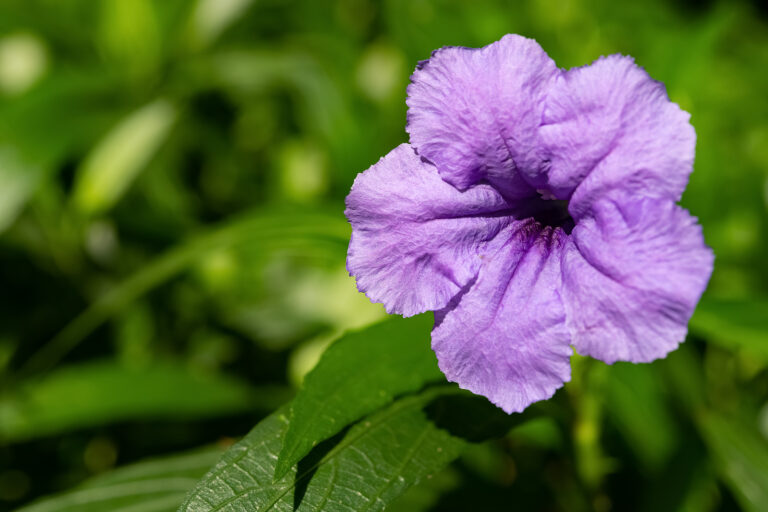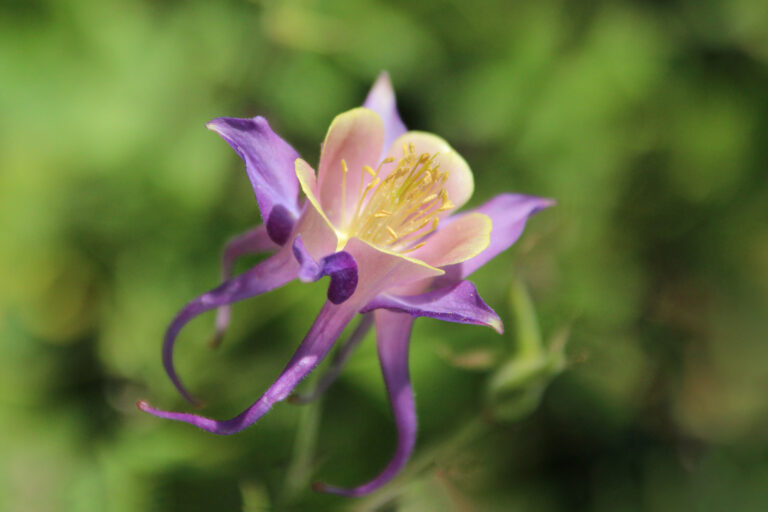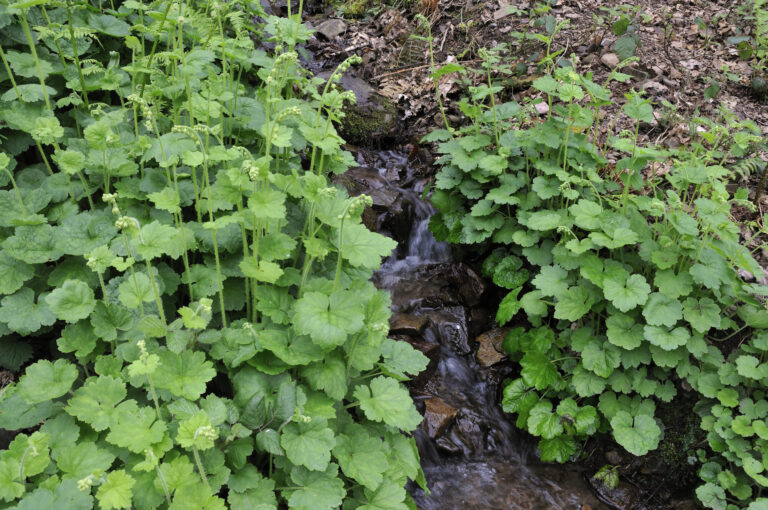How to Grow Lobelia
Lobelia is a diverse genus of annuals and perennials. There are about 370 species of Lobelia. Most are native to the Americas. They are among the most popular native plants for gardens.
The most popular Lobelia, Lobelia erinus, is simply known as edging Lobelia. It is a small tender plant that grows 4 to 8 inches (10-20cm) tall with clusters of very small flowers in shades of blue, red, and white. Edging Lobelia is a perennial usually grown as an annual. It is commonly used in flower beds and containers.
Good Products for Garden Care at Amazon:
- Garden Safe Snail and Slug Bait
- Bonide Sulfur Fungicide
- Monterey BT Caterpillar Killer
- Neem Bliss 100-% Cold Pressed Neem Oil
- Safer Brand Insect Killing Soap
- PyGanic Botanical Insecticide
Also popular, are two more hardy perennial Lobelias both commonly called Cardinal Flower. One is a species Lobelia, Lobelia cardinalis, which grows 2 to 4 feet (.6-1.2m) tall and bears erect racemes of scarlet 2-inch-long flowers in summer and early fall. The second is Lobelia x speciosa, hybrid cardinal flower, which also grows to 4 feet tall and bears red-purple or bronze-red flowers.
Lobelias grow naturally in damp, half-shaded situations and sometimes in the shallow water of slowly moving streams. They are ideal for pond margins or bog gardens. Lobelia attracts butterflies and hummingbirds to the garden.
All parts of the Lobelia plant are toxic.
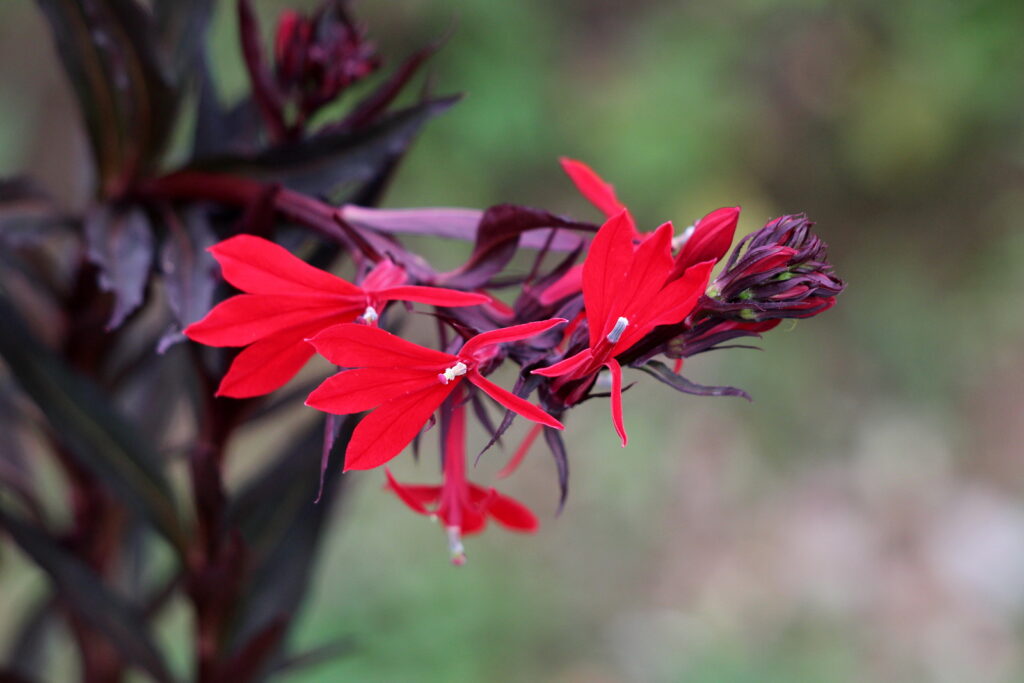
Get to know Lobelia
- Plant type: Perennials and annuals
- Growing Zones and range: Zones 2 to 9
- Hardiness: Hardiness varies; see varieties below
- Height and width: Edging Lobelia (Lobelia erinus) grows 4 to 8 inches (10-20cm) tall; Cardinal flower (L. cardinalis and L. x speciosa) grow 2 to 4 feet (.6-1.2m) tall and 1 to 2 feet wide.
- Foliage: Small, narrow, green or bronze leaves
- Flowers: Flowers are tubular with a slit almost to the base to form two lips; the top lip has two lobes; the bottom one has three lobes; flowers vary in length from 1/2 inch to almost 2 inches depending on the variety.
- Flower colors: Blue, lilac, violet, red, pink, white, and yellow flowers depending on the variety
- Bloom time: Spring to late summer depending on the variety
- Uses: Attracts hummingbirds
- Common name: Lobelia, edging lobelia, perennial lobelia, cardinal flower
- Botanical name: Lobelia species
- Family: Campanulaceae
- Origin: Tropical and temperate regions worldwide, especially North, Central, and South America
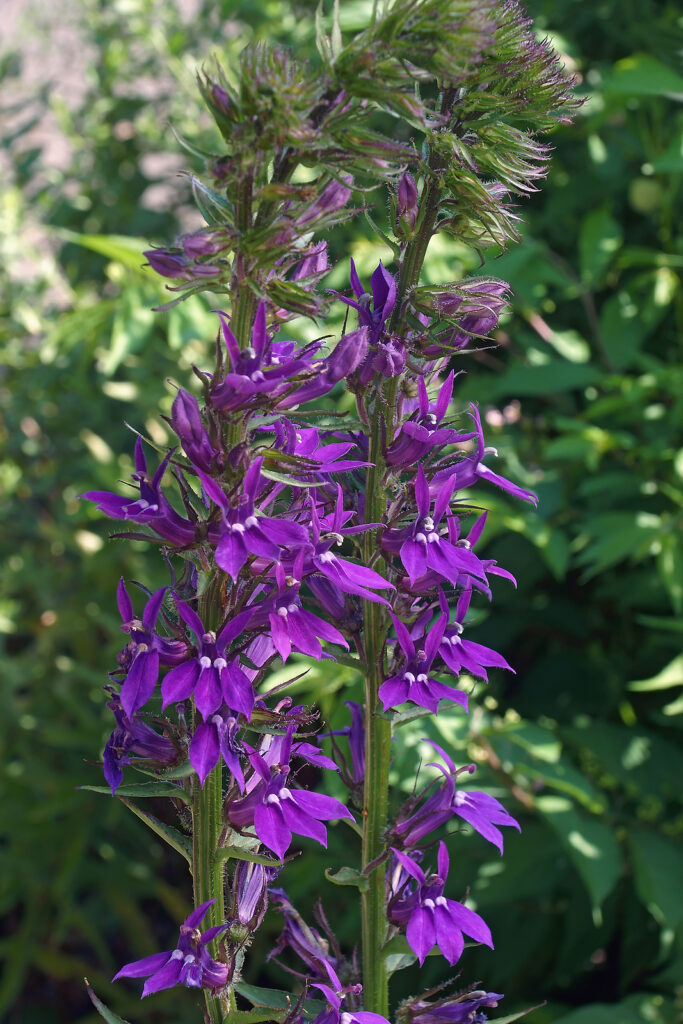
Where to plant Lobelia
- Plant Lobelia in full sun in Zones 2-5; grow in afternoon shade in Zones 5-9.
- Plant species Lobelias–L. cardinalis, L. siphilitica, and related hybrids L. x speciosa–in humus-rich, consistently moist even boggy soil, with consistent moisture they can tolerate full sun.
- Grow edging Lobelia, L. erinus, in humus-rich, moist soil.
- Lobelia prefers a soil pH of 6.0 to 7.5.
Lobelia uses and companions
- Use lobelia in beds and borders and rock gardens.
- The low-growing habit of some varieties makes them a good choice for rock gardens.
- Plant trailing varieties at the top of walls or in hanging baskets.
- Good garden companions include (for moist soil) Filipendula, Iris, Ligularia, Trollius; (for dry soil) Convolvulus mauritanicus, Limonium latifolium, Linum.
When to plant Lobelia
- Sow seed outdoors in spring when the risk of frost has passed.
- Sow seed indoors in late winter; maintain a minimum temperature of 55°F (13°C) for germination.
- Plants started indoors 4 to 5 weeks before the last frost should be hardened off before being transplanted into the garden.
- Set container-grown perennial Lobelia in the garden in spring or fall.
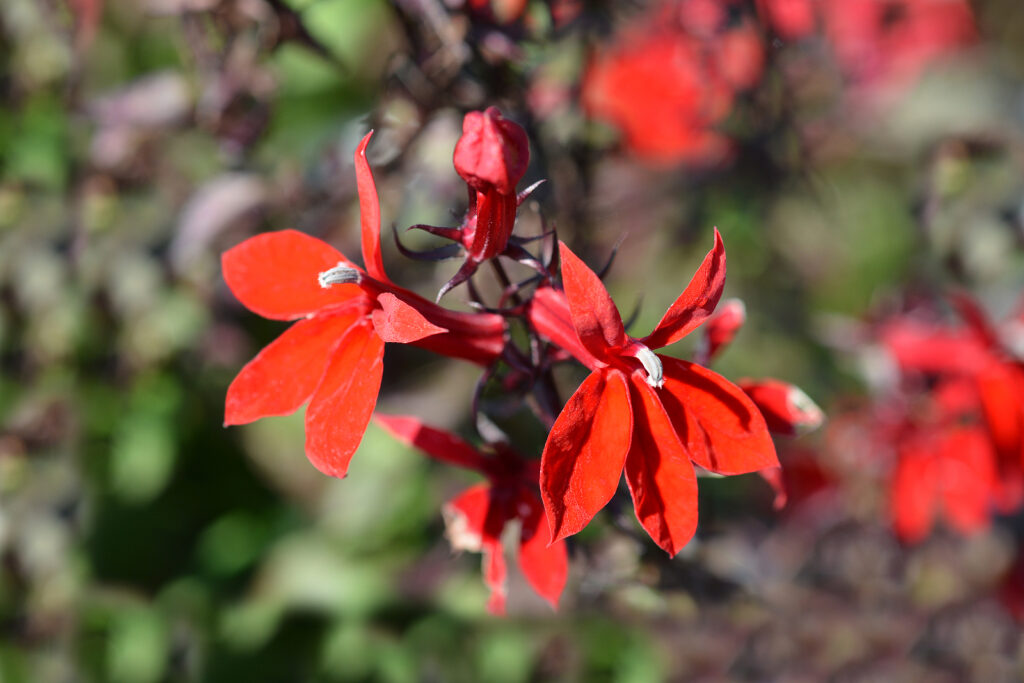
Planting and spacing Lobelia
- Sow seed 1/8 to 1/4 inch deep in evenly prepared garden soil; sow seed indoors in a sterile seed-staring mix or potting soil.
- Space Lobelia 6 to 24 inches (15-61cm) apart depending on the variety.
How to water and feed Lobelia
- Keep the soil moist; do not let the soil dry out.
- Fertilize Lobelia at planting time and each spring after with a slow-release all-purpose fertilizer.
- Feed container-grown plants with a low-nitrogen liquid fertilizer.
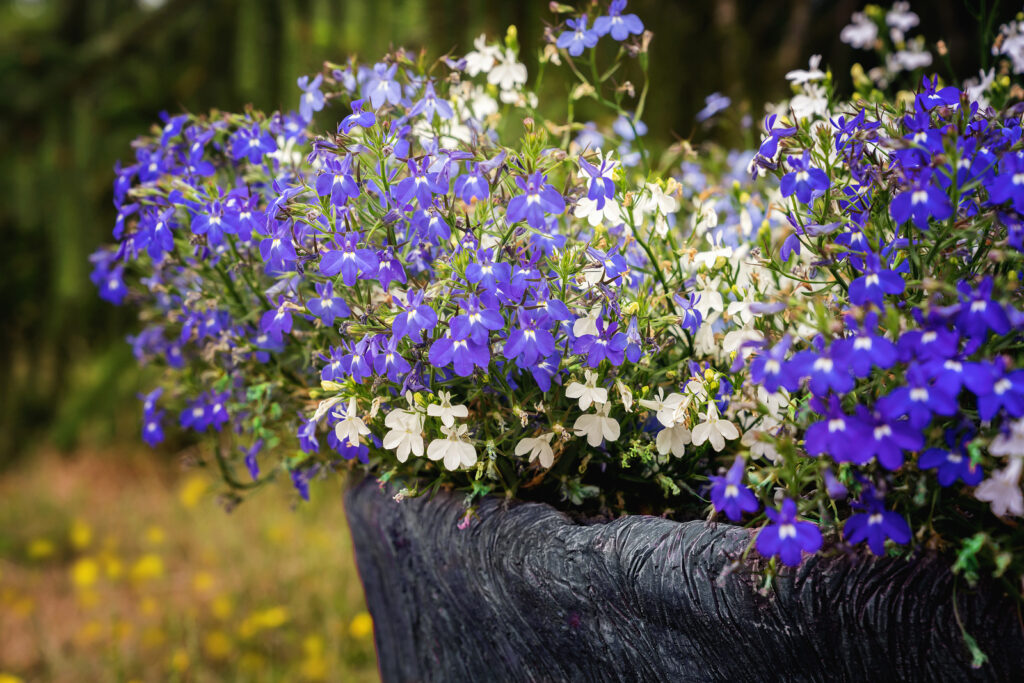
Lobelia care
- Mulch around Lobelia to conserve soil moisture.
- Trim Lobelia spent blooms to encourage new blooms.
- Cut back straggly growth and older stems that no longer produce many flowers.
- Cut down stems to ground level after they have been killed by frost; apply a thick mulch over the crown of plants for winter protection.
Lobelia pests and diseases
- Slugs may attack edging Lobelia.
- Leaf spot may affect some plants.
Lobelia propagation
- Grow edging Lobelia from seed. Sow seed in late winter for spring and summer flowering.
- Seeds germinate uncovered in 20 days at 70° to 75°F (21°-24°C). From seed, Lobelia takes 2 months to reach maturity.
- Divide perennial Lobelia in spring; grow on divided shoots in pots in a cold frame until they are ready for setting out in the garden.
- Perennial Lobelia should be divided every other year.
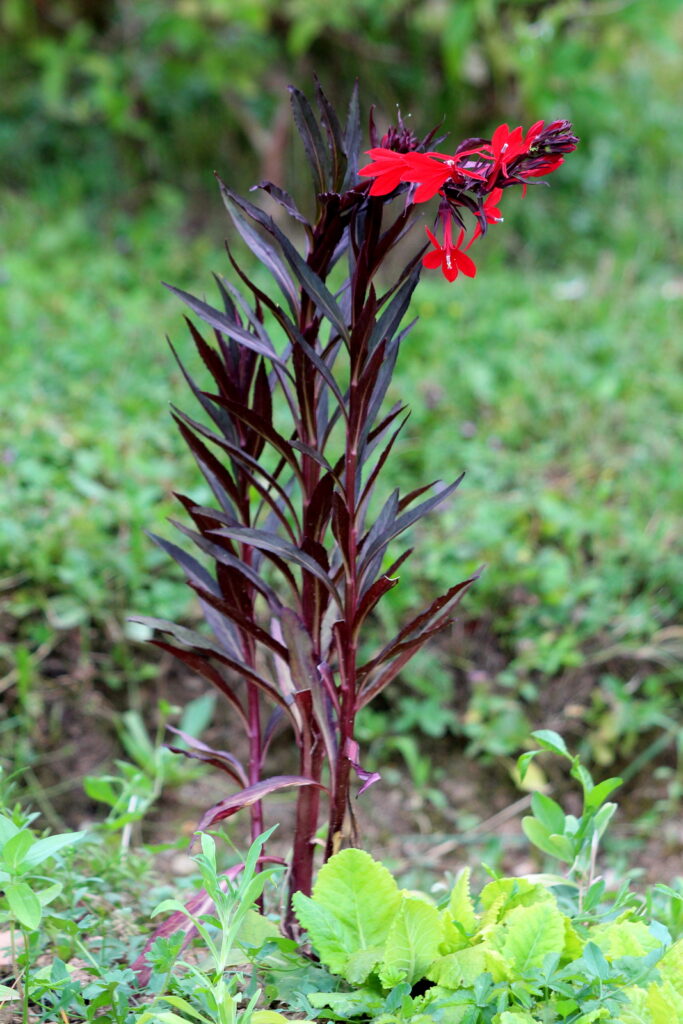
Lobelia varieties to grow
- Lobelia cardinalis, cardinal flower: Grows 2 to 4 feet (.6-1.2m) tall; bears erect racemes of scarlet 2-inch long flowers in summer and early fall; cultivars ‘Rosea’ has rose-pink flowers, ‘Ruby Slippers’ has ruby-red flowers. Hardy to -40°F (-40°C).
- L. erinus, edging lobelia: Much hybridized, trailing or bushy tender perennial, commonly grown as an annual; plants grow 4 to 8 inches (10-20cm) tall and bear all clusters of 1/2 inch flowers from early summer to frost; ‘Cascade Series’ is trailing and suitable for hanging baskets; ‘Rainbow Series’ grows to 5 inches tall, this series includes ‘Crystal Palace’ with blue flowers and bronze leaves, ‘Rosamund’ with cherry-red flowers, and ‘White Lady’ with white flowers. ‘Sapphire’ has blue flowers with white eyes on a cascading plant. ‘Rosamunde’ has carmine-red blooms with white eyes on bronze-foliage dwarf plants. ‘Crystal Palace has bronze-green foliage with dark blue flowers on 4 to 6-inch plants.
- L. laxiflora. Upright stems to 2 feet tall; dark green leaves topped by loose clusters of tubular orange-red flowers. Hardy to -10°F (-12°C).
- L. siphilitica, called great blue lobelia; Grows 2 to 4 feet tall; bears dense racemes of blue or purple flowers from late summer to fall; cultivar ‘Alba’ has white flowers. Hardy to -30°F (-34°C).
- L. x speciosa, hybrid cardinal flower: Several hybrid perennials that range from 2 to 4 feet tall; bloom from summer to fall; includes cultivars with crimson red flowers scarlet flowers.
Lobelia Frequently Asked Questions
Q: Can lobelia be grown indoors in winter?
A: You can grow lobelia from seeds or cuttings to produce winter blooms. Lobelia does not require as much sun as other plants so it can be grown in a cool window.
Q: Which lobelia is grown as a bedding plant?
A: Lobelia erinus is grown as a summer bedding plant. It grows 4 to 8 inches tall. There are several cultivars to choose from. ‘Sapphire’ is dark blue. ‘Crystal Palace’ has bright dark blue flowers and bronze foliage. ‘White Lady’ is sparkling white. ‘Cascade’ is a good choice for a hanging basket; it is available in blue, red, white, purple, and lilac. Lobelia cardinalis is a perennial lobelia.
Q: I have not had success growing cardinal flowers (Lobelia). Do you have any suggestions?
A: Lobelia cardinalis naturally grows in wet places such as streamsides and swampy areas. It needs afternoon shade. In areas colder than -10F, protect the plant with winter mulch.
Q: My bedding lobelia gets leggy by midsummer. What can I do?
A: Edging or bedding lobelia (Lobelia erinus) can be sheared back to encourage compact growth and heavier bloom. Keep the soil evenly moist. Fertilizing lobelia will only encourage leafy growth, not blooms.




